
In review: Béatrice et Bénédict at Glyndebourne
ReviewLaurent Pelly’s production of Beatrice et Benedict rounded out our Shakespeare-themed time at Glyndebourne this summer. Much like the rain that doused the gardens on this Friday afternoon, B and B is a refreshing version of a love story, one that rings more true to the average person than an easy, reciprocated declaration of love. Shakespeare pokes fun at how fragile we are with others - how we crave emotional safety before taking a leap of love - and how much easier it is to be defensive than to be honest.
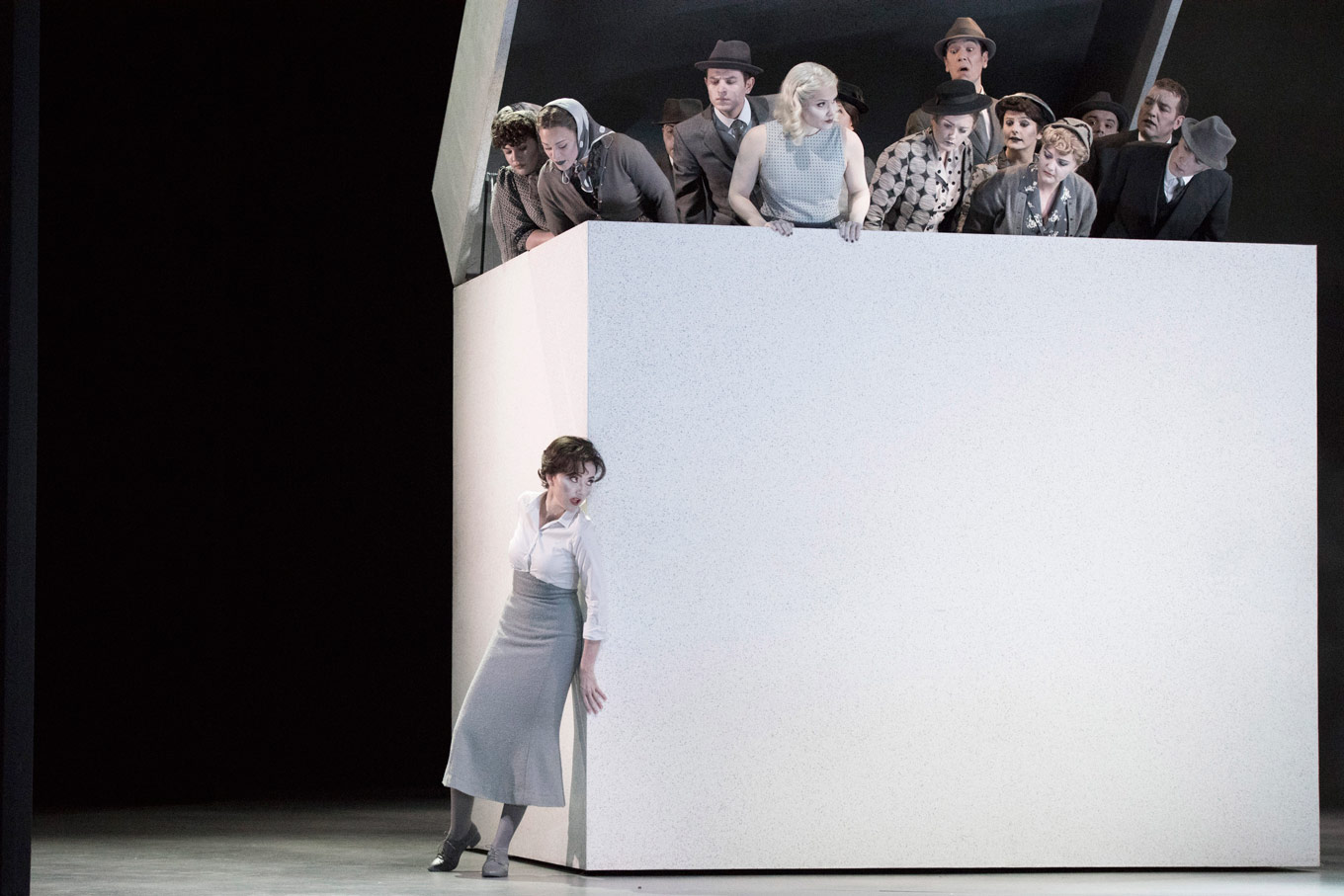
Berlioz’s take on Much Ado About Nothing always sits funny for us; there’s something meandering about the score, like the musical equivalent to the concept of “talking without saying anything”. Of course, the opera isn’t devoid of opinion or character, yet it seems to swerve too far in the directions of frank text delivery (dialogue seems an abrupt answer to recitative in this style of music), and emotionally invested arias (they often seem too long).
It seems a difficult piece to direct, and Pelly created a curious world inspired by black-and-white films and early 20th-century physical comedy. Everything, from sets to make-up, were in hues of grey; the set was dominated by oversize white boxes in which we saw scenes of domestic bliss and other things that seemed to scare off both Bénédict and Béatrice. Among the starkness of the set were entertaining mini-scenes, like the sassy waiters hissing “attention!” or the incessantly perky chorus cheering and flailing flags for Sicily.
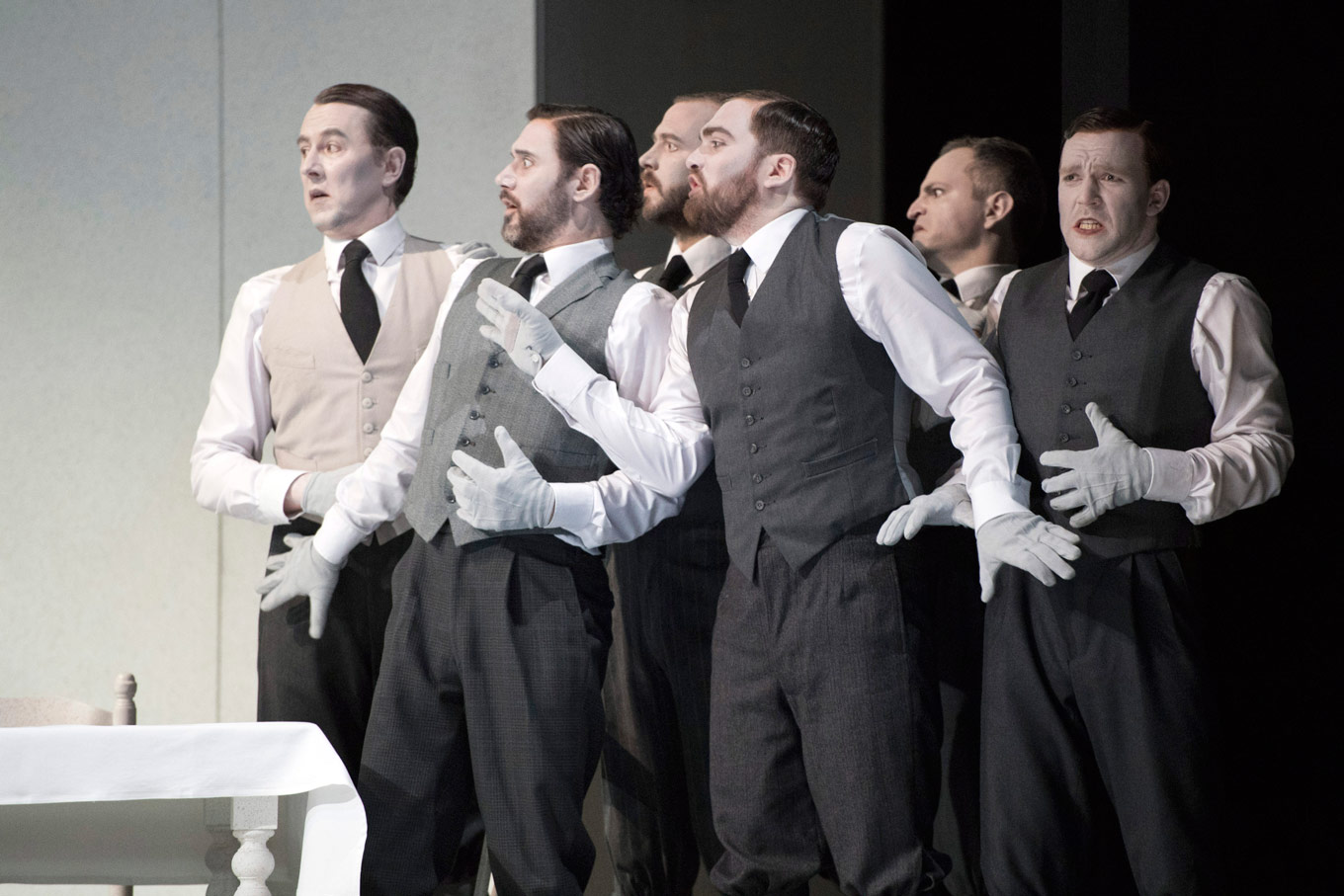
The concept was intriguing, and the addition of old school slapstick kept the story clearly on the side of comedy; yet, the meaning of Pelly’s choices stayed vague. When the music gave clear cues of motion and comedy, Pelly makes use of them; yet at other times, there seemed to be empty space, question marks left on Berlioz’s score. Béatrice’s aria in Act II, and Héro’s duet with Ursule in Act I are great examples, where the challenges are similar to those of bel canto; what to do with repeated text, repeated music, or an extended cadenza? The music often seemed to run longer than did the staging ideas.
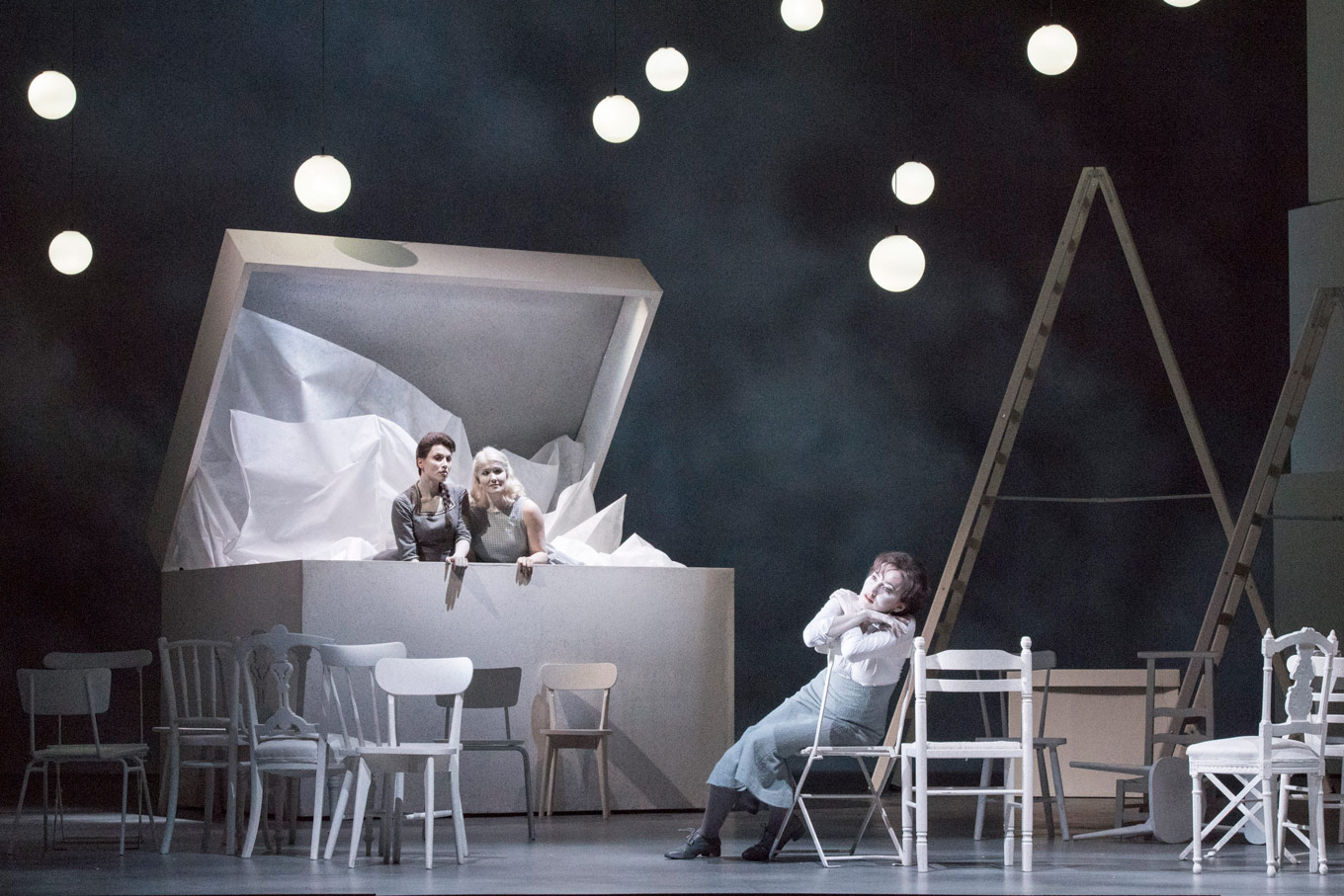
Tenor Paul Appleby was a strapping Bénédict, full of fire and with a quick temper. His sound was heroic up top, and he showed smart pacing with the tricky low passages in Berlioz’s writing. He was a perfect picture of a man with all the ingredients for a happy, coupled life, protesting too much against being put in a box (into one of those oversize white boxes, we assume). Stéphanie d’Oustrac was a perfect counterpart as Béatrice, and she walks that perilous line between headstrong and bitchy. The richness in her sound is what kept the audience on her side; her powerful voice had surprising agility, and d’Oustrac stood out as a clear force with which to be reckoned.
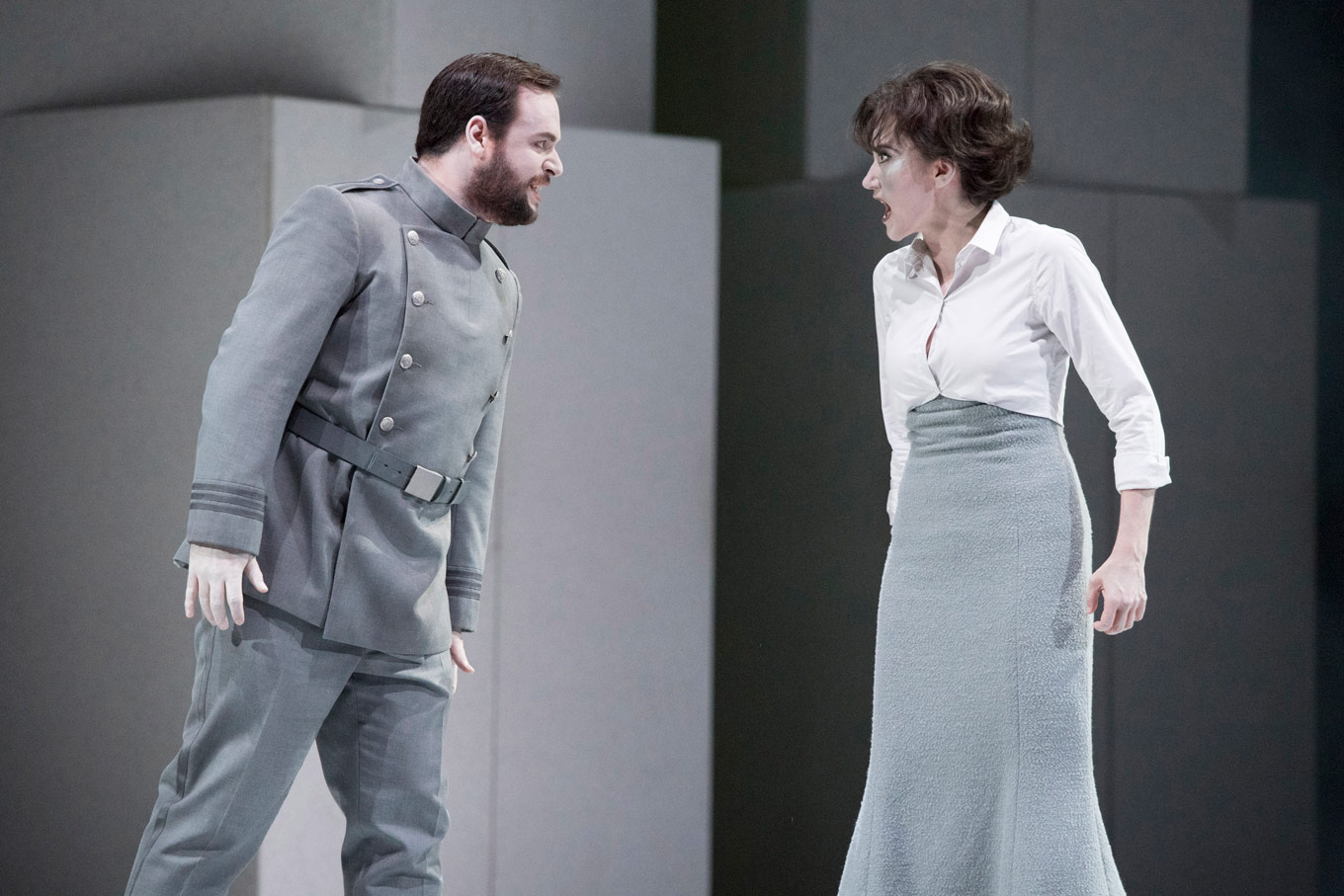
Anne-Catherine Gillet sang Héro with a clear, bell-like sound, full of anticipation and nerves about her upcoming marriage to Claudio. Philippe Sly was a noble Claudio, singing with a clear, attractive sound that added manliness to the almost lovesick soldier we see at the top of the show. Katarina Bradić was a lovely Ursule; her blend with Gillet in their duet singing brought audible sighs from the audience.
 Béatrice et Bénédict, Glyndebourne, 2016. Photo: Richard Hubert Smith.
Béatrice et Bénédict, Glyndebourne, 2016. Photo: Richard Hubert Smith.
In the great gag scenes with the Glyndebourne Chorus, Lionel Lhote was a big bite of extra comedy as Somarone, the music master. Lhote seemed a delightful buffo combination of the Komponist from Ariadne auf Naxos, Bottom from A Midsummer Night’s Dream, and Bartolo from Il barbiere di Siviglia. Under the (real) direction of Chorus Master Jeremy Bines, the chorus did a fab meta performance of a fugue done “badly”, then much improved.
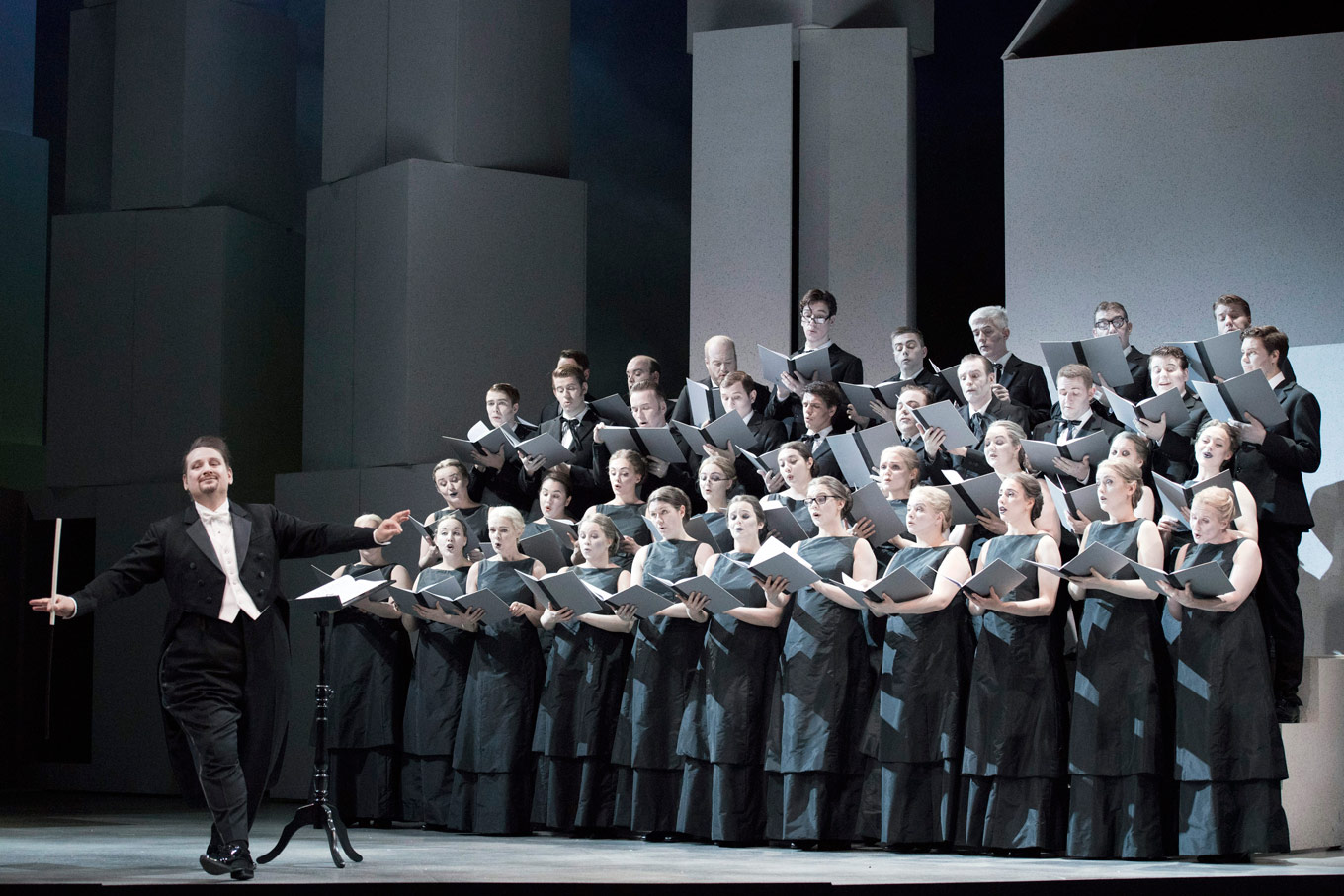
Under Antonella Manacorda, the London Philharmonic Orchestra found the fun in Berlioz’s score. Manacorda left lots of room for listening, conducting wide beats and sweeping phrases.
Though the production felt entertaining yet stilted - ideas that don’t quite become clear - the music in this Béatrice et Bénédict is superb. The production runs at Glyndebourne until August 27, with limited ticket availability. For details, click right here.


Comments